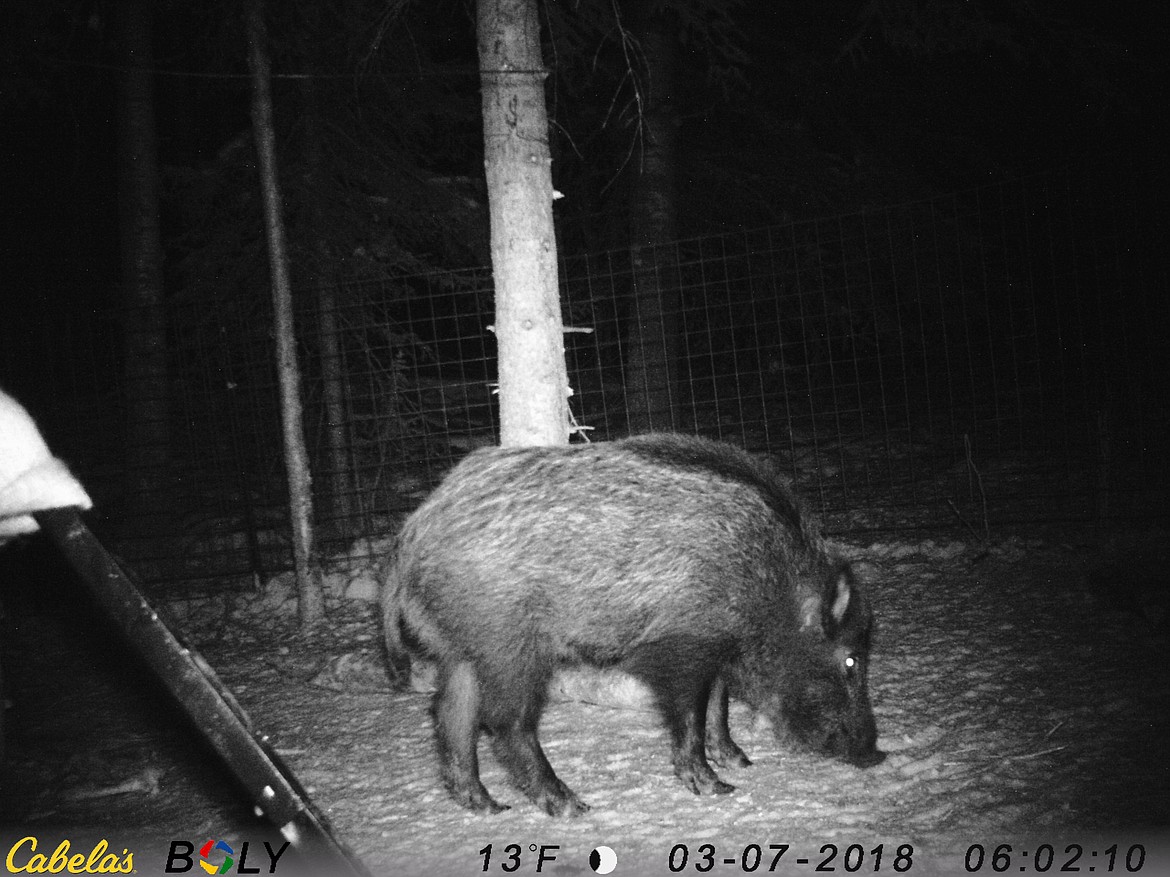Feral pigs become growing concern
The possibility of feral pigs becoming Montana’s latest invasive threat has concerned state officials enough that the Montana Invasive Species Council as part of the Feral Swine Transboundary Workgroup, released a report concerning the issue recently.
The report stems from growing concern over populations of feral swine that have been expanding their distribution throughout Canada in the last 30 years.
Feral swine, a hybrid between wild boar and heritage breed pigs, have long been an economic and ecological problem in North America, after the non-native species was introduced to the continent by Europeans in the 1500s.
However, until recently, the pigs maintained a fairly consistent distribution throughout the southern United States, steadily growing in numbers, but rarely settling higher than the 42nd parallel.
That changed, however, in the 1980s when much of the Canadian pork industry, in an attempt to diversify their stock, began raising wild boar. At the time, it was commonly assumed wild pigs couldn’t establish that far north.
An assumption that was turned on its head as, over the years, either through escape or lot abandonment, boar populations that have seeped into the wild have not only become established, but are rapidly expanding throughout the provinces, according to researchers studying the issue at the University of Saskatchewan.
Over the last 30 years, feral pigs have been found in all western Canadian provinces from British Columbia to Manitoba, with detections in Alberta, and especially Saskatchewan, exploding within the last decade.
Responding to this data, MISC partnered early last year with the Washington Invasive Species Council to establish the Feral Swine Transboundary Working Group, a collaboration of researchers, private land managers, and state, provincial and federal agencies from both Canada and the U.S., in an attempt to stay ahead of the encroachment.
The alarm for those concerned is twofold. It stems not only from the substantial ecological and economic destruction these large mammals can inflict, but also from a set of inherited traits that have some agencies calling them “super pigs.”
As a hybrid between wild boar and domesticated pigs, northern feral swine acquired traits from each that are almost perfectly tailored to guarantee survival in the wilder, colder climes of Canada.
Coming from European stock whose ranges reached into lower Scandinavia, hybrid pigs possess the hardiness of wild boar to endure harsh conditions. They carry the course long hair and sturdy tusks of their Euro-native counterparts, better equipping them for cold and wild foraging.
However, they diverge from their smaller European counterparts in size, instead taking on the girth of their domesticated ancestry. Feral pigs have been known to reach 600 pounds, a significant advantage for an animal living among major predators.
The new hybrids also possess astonishing fecundity, seemingly inheriting the breeding capacity of domesticated pigs, with the ability to have litters of six to twelve, often twice a year.
Known for their voracious and indiscriminate appetite, feral swine are omnivorous and will eat anything from herbaceous plant material to fish to small mammals. Their love of eggs can impact populations of ground-nesting birds.
Their aggressive rooting and foraging behavior leaves large swaths of rototilled land in their wake, which can cause erosion, spread noxious weeds and decimate crop fields.
They’re also drawn to riparian habitats, where their presence can wreak havoc in the most ecologically sensitive of landscapes: wetlands. A group of pigs, known as a sounder, can strip a marsh of an entire stand of cattails to line their wallows.
On top of all of this is their intelligence. Feral pigs can quickly learn from and adapt to environmental pressures. This ability has led officials to discourage the use of recreational hunting as a means of population control. Any hunting attempt that does not eliminate an entire sounder leaves survivors that modify their behavior to evade hunters in the future.
Other concerns include the possibility of the species contaminating water sources and spreading disease to livestock and humans.
Montana has yet to confirm an actual case of feral pigs, but sightings have been reported in southeastern Alberta, only 20 miles from the state’s north-central border, according to Tahnee Szymanski, the assistant state veterinarian for the Montana Department of Livestock.
Given that Montana and most other northwestern states are currently free of feral pigs, the bulk of the Workgroup’s December report focused mainly on prevention and early detection methods.
The current priority is to create a formalized system, coordinated across agencies, to which sightings can be reported in order to share accurate data and facilitate effective, rapid response.
This has most effectively been done through the adoption of the “Squeal on Pigs” campaign by multiple states as well as Canadian provinces.
The “Squeal on Pigs” campaign provides a unified platform that both educates the public on the importance of reporting feral swine —or signs of them— in order to prevent an infestation, as well as provides the hotline where sightings can be reported.
To report a feral swine sighting, call the “Squeal on Pigs” hotline at 406-444-2976, or visit https://invasivespecies.mt.gov/montana-invasive-species/squeal-on-pigs#:~:text=Call%20406%2D444%2D2976 to learn more.


